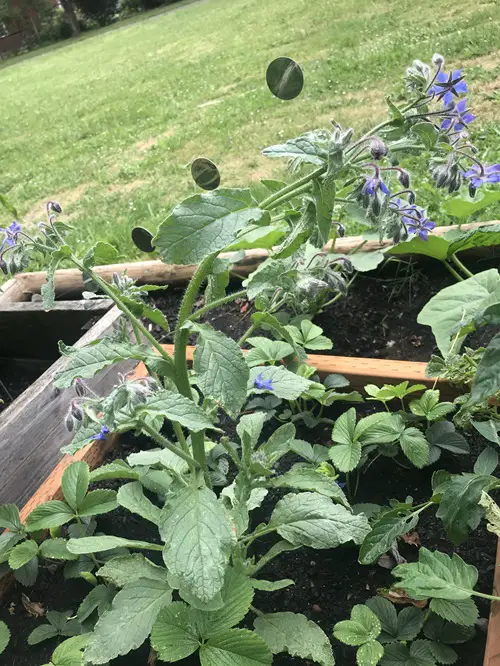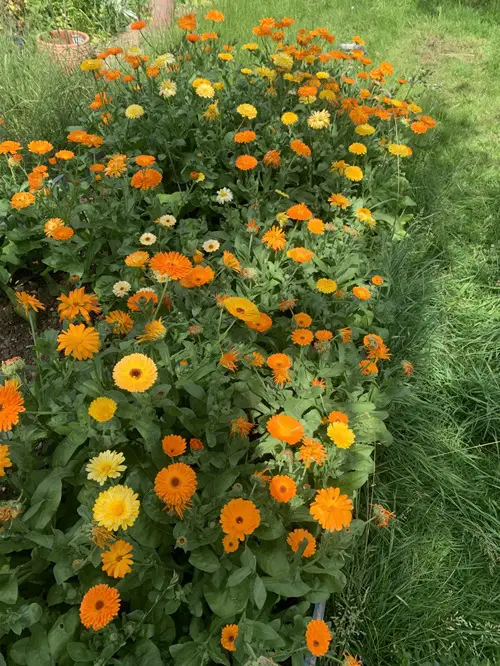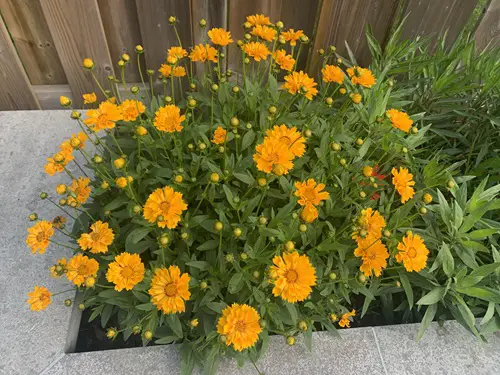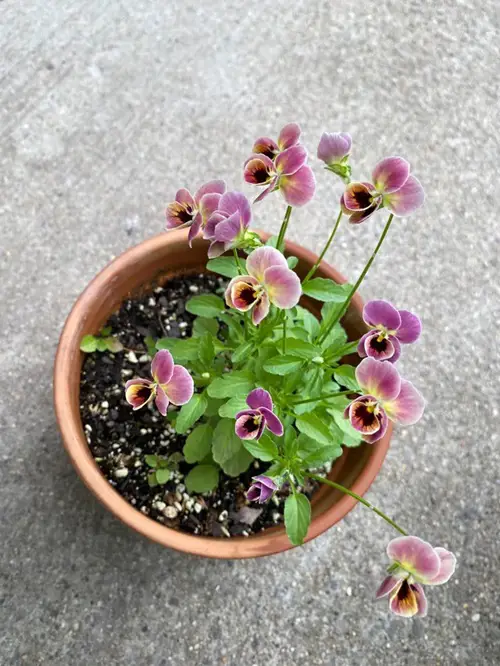For recurring blooms with little to no effort, check out our selection of self-seeding flowers that drop seeds and grow on their own!
All of these varieties are excellent at self-seeding, meaning they drop seeds in your garden before they die. The seeds will germinate on their own the following year, providing beautiful blooms again the same or next year without you having to do much.
Self Seeding Flowers
1. Black-Eyed Susan
Botanical Name: Rudbeckia hirta
This plant has large, daisy-like yellow blooms that attract pollinators like butterflies and bees. With blooms that last several weeks, this one is a fast-spreader, so if you want to keep it in check, deadhead spent blooms to prevent self-seeding.
It thrives in full sun and neutral, well-draining soil and is relatively drought-tolerant once mature.
2. Borage
Botanical Name: Borago officinalis
Once a borage plant establishes itself in your garden, you’ll never have to reseed it! This sun-loving, self-seeding herb produces bluish, fragrant flowers and is highly beneficial to your garden in repelling pests, accompanying veggies, and amending soil.
Great for composting, mulching, and adding trace minerals to your soil, plant this drought-tolerant herb alongside tomatoes, brassicas, and strawberries to enhance taste and yield.
3. Calendula
Botanical Name: Calendula officinalis
Calendula produces fragrant orange or yellow flowers with multiple slender petals. Another beneficial herb to plant in your garden is calendula, which blooms open in dry, warm weather and closes up in moist, cold conditions. This culinary fave self-seeds yearly, and don’t mind crowding.
Preferring full to partial sun, you can cut back the plants to encourage new blooms.
4. California Poppy
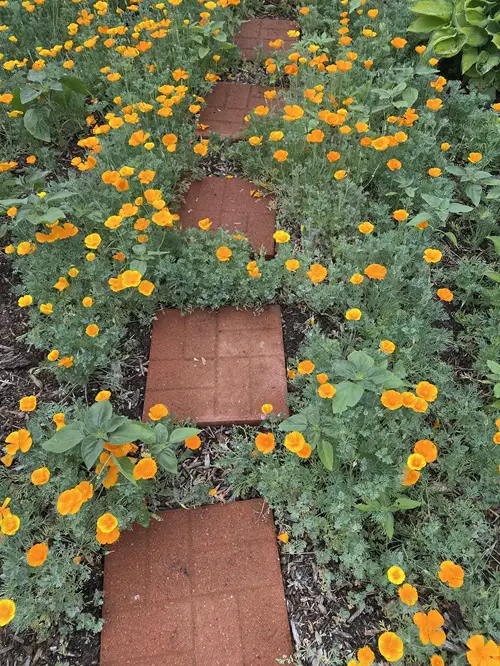
Botanical Name: Eschscholzia californica
Use California poppies to add abundant color to your garden border. It drops seeds on the soil at the end of the season, which eventually germinate and grow without help. Assigned the state flower of California, this short-lived perennial is also known for its medicinal properties.
It needs at least six hours of direct sunshine daily and grows in a variety of soil types. This drought-tolerant plant is perfect for xeriscaping in dry regions.
5. Columbine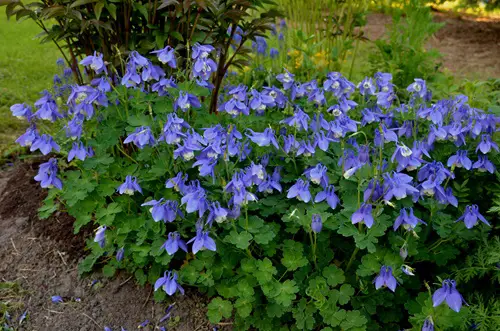
Botanical Name: Aquilegia spp.
Luring hummingbirds to its nectar-filled blooms, columbine is a perennial wildflower that is a prolific self-seeder. Its spring blooms emerge in yellow, red, indigo, blue, and white, often changing hues according to the soil’s pH.
While a short-lived plant, it sustains and expands by reseeding itself with ease, so long as it gets dappled shade and compost-rich, moist, well-draining soil.
6. Cosmos

Botanical Name: Cosmos bipinnatus
Cosmos is the next self-seeding flower on our list. Its blooms appear in delicate shades and fusions of pink, red, and white from early summer to fall. Just drop its seeds in the garden after all frost has passed, and these heat-loving, hardy annuals will sprout eventually.
These sun-loving plants are perfect for cutting gardens due to their long-lasting blooms. Beneficial insects like bees and butterflies also visit these flowers to pollinate.
7. Hellebore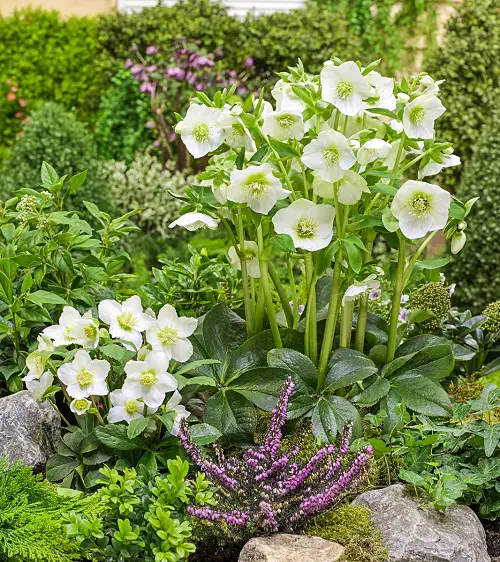
Botanical Name: Helleborus spp
This is another beautiful self-seeding evergreen flower with excellent drought-tolerant traits. Hellebore seeds are big and easily fall down and germinate. Late winter to early spring, blooms that bear patterns on the petal’s undersides emerge.
Plant hellebores on a slope or raised venues in full sun to partial shade to get a full view of their unique flowers.
8. Korean Mint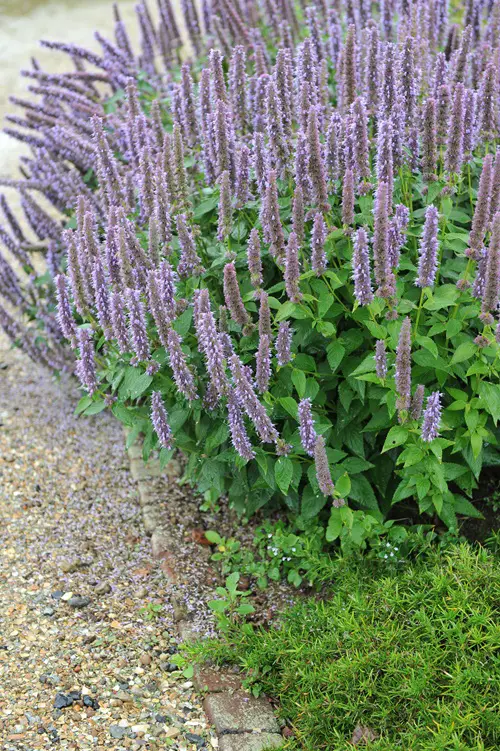
Botanical Name: Agastache rugosa
This eastern Asian native is an herbaceous perennial that produces showy purple flower spikes that lure butterflies and hummingbirds, as well as edible, aromatic leaves. Its seeds carpet the ground around parent plants and sprout in fall, yet again giving you beautiful blooms.
It’s important to note that Korean mint thrives in full sun and well-draining sandy, loam soil.
9. Love-in-a-Mist
Botanical Name: Nigella damascena
This buttercup cousin produces solitary blue, white, and lavender blooms above airy foliage in spring and early summer. Its spent flowers drop seeds and sprout all over the garden with no fuss. This cool-season annual flower doesn’t transplant well due to its long taproots.
Sow its seeds directly in the garden in early spring for best results. It prefers full sun and well-draining, fertile soil.
10. Purpletop Vervain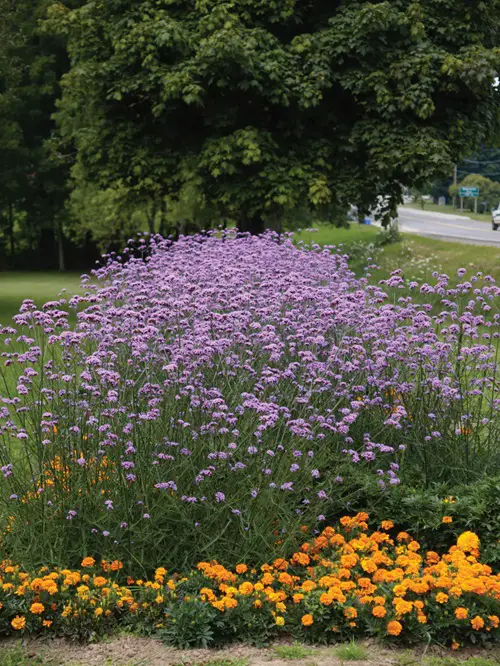
Botanical Name: Verbena bonariensis
Purpletop Verbena is a slender-stemmed perennial with fragrant lavender to rose-purple umbrella-shaped clusters of blooms that attract butterflies. This self-seeder develops a woody, stiff base that prevents it from tipping over. Its tall, airy stems make it an excellent plant for creating a layered effect in mixed borders.
Cut back the stems of this plant in late winter to early spring and enjoy vigorous new growth. It thrives in full sun and fertile, organic-rich soil but can tolerate poor mediums as well.
11. Snapdragon 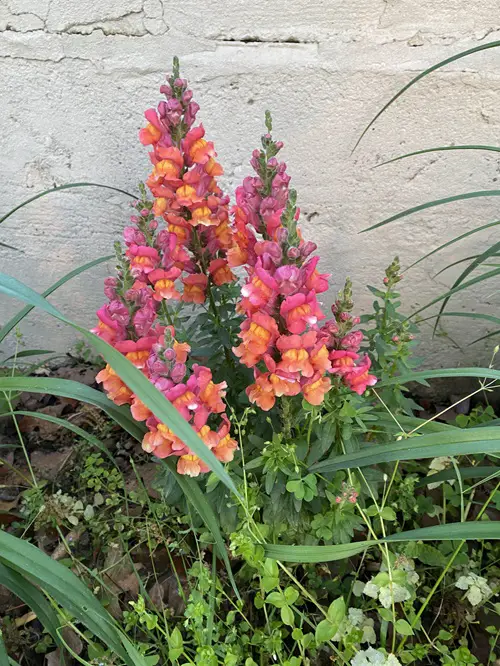
Botanical Name: Antirrhinum majus
Snapdragon is an old garden favorite that thrives in cool weather. This easy self-seeder produces distinctive snapping blooms that appear in a range of colors from spring to fall. Despite being seed-droppers, snapdragons are not invasive and are a healthy addition to your remaining vegetation.
With blooms that resemble the snapped-shut snout of a dragon, bumblebees are the main pollinators that have the strength to pry open their jaws.
12. Spider Flower
Botanical Name: Cleome
Also known as stinking clover and grandfather’s whiskers, this South American native produces white, pink, and purple blooms with long, thread-like stamens. Its prickly foliage emits a pungent, skunk-like scent. In its native tropical habitat, bats mainly pollinate the plant.
Seedpods replace spent flower heads. Once dry, they pop open, dropping small, brown seeds in their vicinity. This flower’s drought-tolerant nature makes it perfect for hot and sunny locations where other flowering plants struggle.
13. Tickseed
Botanical Name: Coreopsis hybrida
With seeds resembling ticks, hybrid coreopsis is a potpourri of crossed cultivars that produce daisy-like blooms with tooth-edged petals in various hues. If you don’t deadhead, its spent flowers will give birth to a whole new bunch by next year’s spring.
This long-blooming perennial attracts butterflies and thrives in poor, dry soil conditions as long as it gets 4-6 hours of full sun daily.
14. Wild Pansy
Botanical Name: Viola tricolor
Also known as Johnny Jump Up, this wildflower is short-lived, but because it is such a prolific self-seeder, you’ll never find it scarce. From spring to summer, it produces edible blooms in many fused hues and is used to decorate cakes, salads, and other dishes.
This early bloomer is often used for landscaping before other flowers bloom. It thrives in partial to full sun and moist, adequately fertile, well-draining soil.
15. Zinnia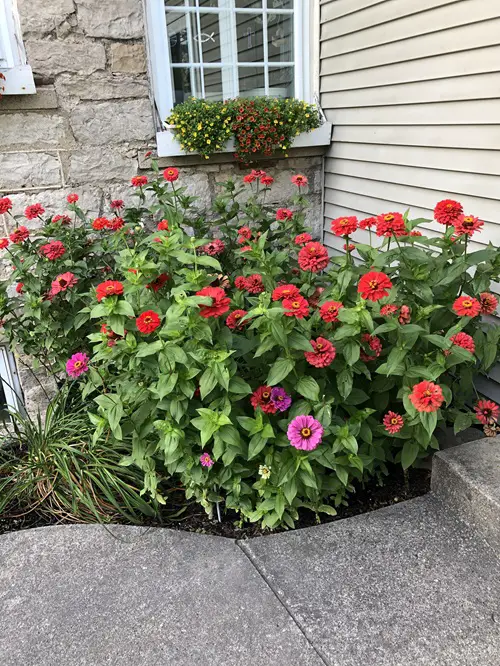
Botanical Name: Zinnia
Zinnia is a heavy-blooming American native that brings an explosion of colors to your garden. Attracting butterflies and hummingbirds to its myriad colored nectar-filled blooms, this heat-tolerant annual self-seeds easily, sprouting new plants nearby.
Start zinnias from seeds after the last frost to ensure a long-lasting supply. They thrive in full sun and well-draining, nutrient-rich soil.
16. Alyssum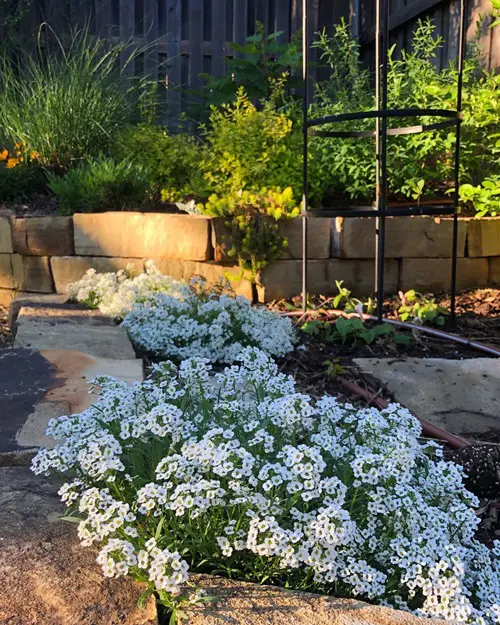
Botanical Name: Lobularia maritima
This mat-forming, short-lived Mediterranean native produces tiny white or purple flowers that drop seeds and ensure its vigorous spread. Sweet alyssums grow well along garden borders, as ground cover, or in window boxes and pots with full sun and regular garden soil.
Water mildly every week and more frequently during hot, dry spells.
17. Amaranth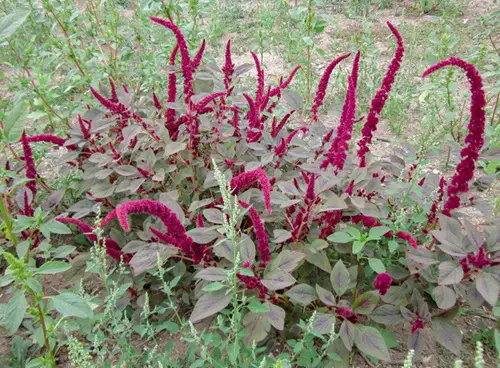
Botanical Name: Amaranthus cruentus
Amaranth produces solitary racemes of burgundy flowers that grow tall and sway with the wind. Its leaves and seeds are edible and highly nutritious, often used in salads and soups. Due to its self-seeding nature, it will keep coming back season after season on its own.
It needs abundant, bright, and direct sunshine to produce the best blooms and thrive.
18. Bee Balm

Botanical Name: Monarda didyma
This aromatic herb, also known as bergamot, is a beautiful wildflower native to North America and a member of the mint family. Both its leaves and reddish pink tubular blooms are edible and are often used in flavoring teas, beverages, salads, and garnishes.
Attracting hummingbirds, bees, and moths, this self-seeder thrives in full sun and slightly acidic, well-draining soil. It is often affected by powdery mildew, which you can prevent by planting in a location with good air circulation.
19. Bachelor’s Button
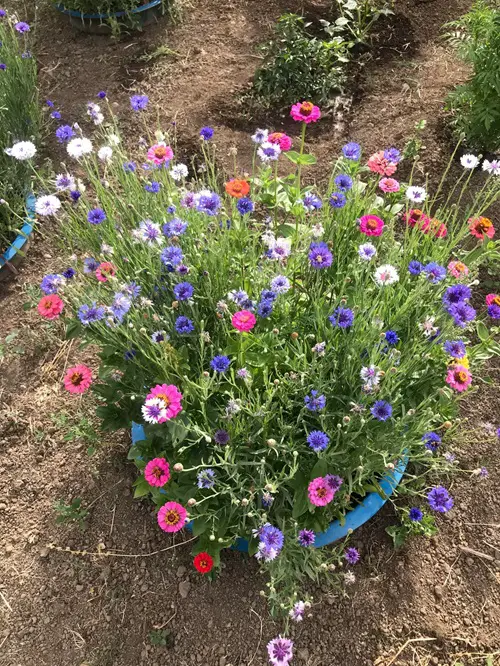
Botanical Name: Centaurea montana
Native to Europe, this small perennial produces rich blue cornflowers with fringed edges and dark centers. This drought-tolerant flower spreads via stolons, as well as seeds dropped from spent blooms.
It grows well in full sun and partial sunlight and tolerates poor soil conditions, making it a perfect beginner’s plant.
20. Bleeding heart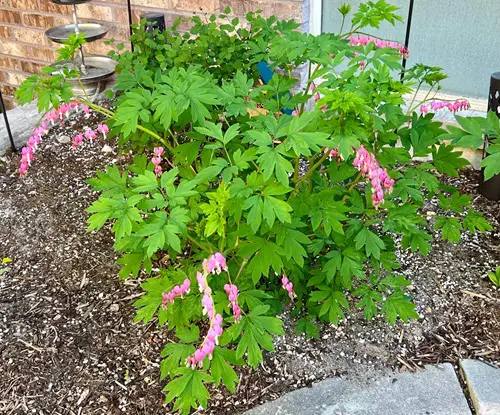
Botanical Name: Dicentra spectabilis
The heart-shaped flowers of bleeding hearts delicately dangle from arching stems in shades of pink or white. Blooming for 4-6 weeks in late spring to early summer, this flower fades away by mid-summer.
Bleeding hearts plants prefer moist, well-drained soil and are pest-resistant.
So, which one of these self-seeding flowers are you planning to grow? Share in the comments!


